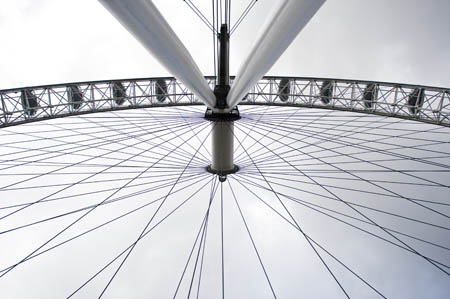Please note that the information on this website regarding photographers' rights and UK law must not be regarded as authoritative. It is written in general terms with a view to increasing general everyday understanding. However it is neither intended to provide authoritative advice nor to be used as guidance in specific cases. Anyone seeking authoritative advice regarding such matters, or anyone involved in a particular legal case, must seek the advice of a suitably qualified solicitor.
There are no legal restrictions on photographing buildings, other than in very exceptional circumstances, provided the photographer is in a public place. The owners of buildings have no right to prohibit photography provided the photographs are taken from a public highway, pavement, footpath etc. However if the photographer steps on to private land he or she commits a trespass and may be asked to leave. If a photographer is given permission to enter private property provided no photography is undertaken, and then takes photographs, a trespass is committed. Photographers are not permitted to climb on walls or fences surrounding private property. Trespass is not normally regarded as a criminal offence, but a landlord may be able to sue for damages even when no physical damage was caused.
 Photographers are best advised not only to seek permission before entering private property but also to be honest about their intentions. Many land owners are accommodating when an approach is made in an open and reasonable manner. However, if asked to leave, a photographer should do so. A property or land owner has a limited right of self-help against a trespasser and is consequently allowed to use reasonable means, including appropriate force where required, to remove a trespasser from private property. Threatening a trespasser with a gun or or other excessive violence would not be regarded as reasonable. There is no right to insist that a photographer delete photographs taken on private land or to confiscate or damage cameras or other photographic equipment.
Photographers are best advised not only to seek permission before entering private property but also to be honest about their intentions. Many land owners are accommodating when an approach is made in an open and reasonable manner. However, if asked to leave, a photographer should do so. A property or land owner has a limited right of self-help against a trespasser and is consequently allowed to use reasonable means, including appropriate force where required, to remove a trespasser from private property. Threatening a trespasser with a gun or or other excessive violence would not be regarded as reasonable. There is no right to insist that a photographer delete photographs taken on private land or to confiscate or damage cameras or other photographic equipment.
Where a right of way crosses private land, a photographer is permitted to take photographs for personal use but commercial work is generally not allowed without specific permission. Access to private land does not allow access to buildings or structures on the land, or to associated areas such as gardens.
It is important to distinguish between public places and private property to which the public may be permitted access. Examples of the latter locations may include shopping centres, museums, art galleries etc where the relevant authorities may allow public access only on the understanding that no photography is undertaken.
Photographs can be taken inside many of the well-known London museums such as the British Museum or the Victoria and Albert Museum. Places of worship, such as St Paul's Cathedral and Westminster Abbey do not allow interior photography. External photography for personal use (excluding use in the media) is allowed at Canary Wharf under limited conditions. All other types of photography require a permit. A similar situation exists in Trafalgar Square and Parliament Square.






